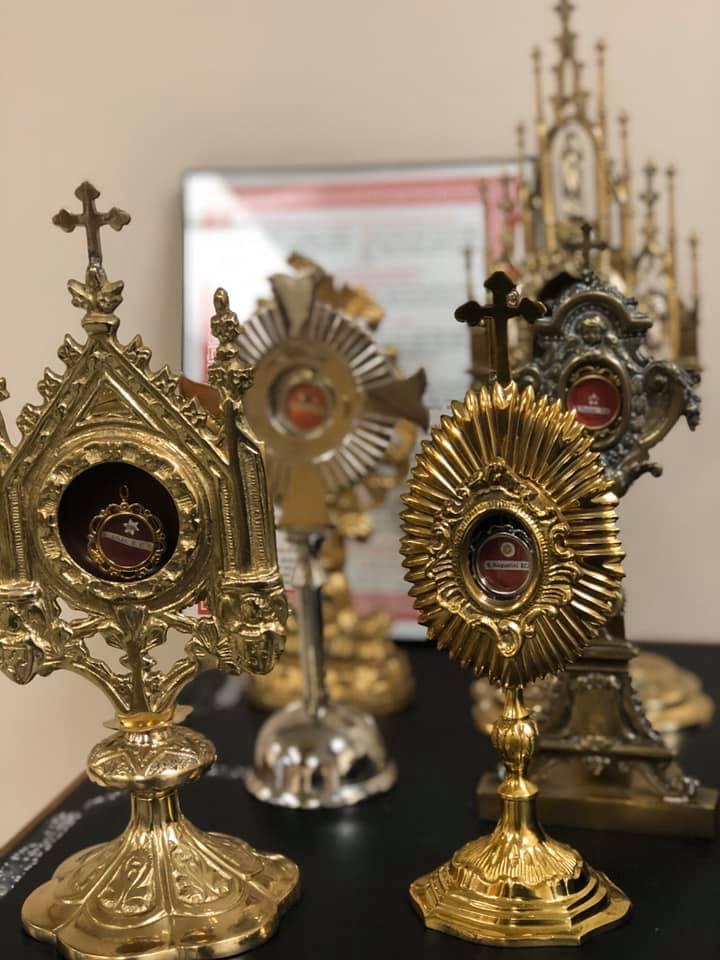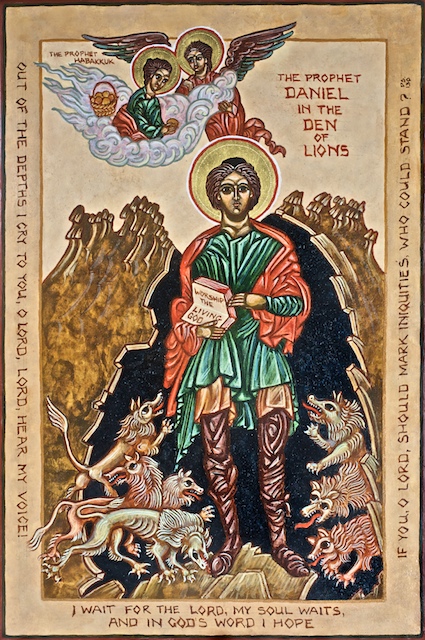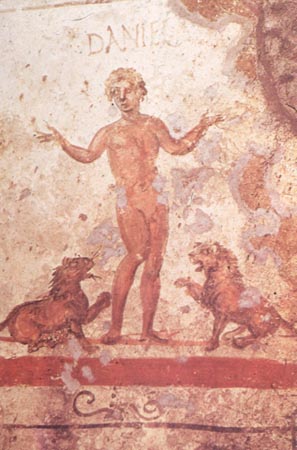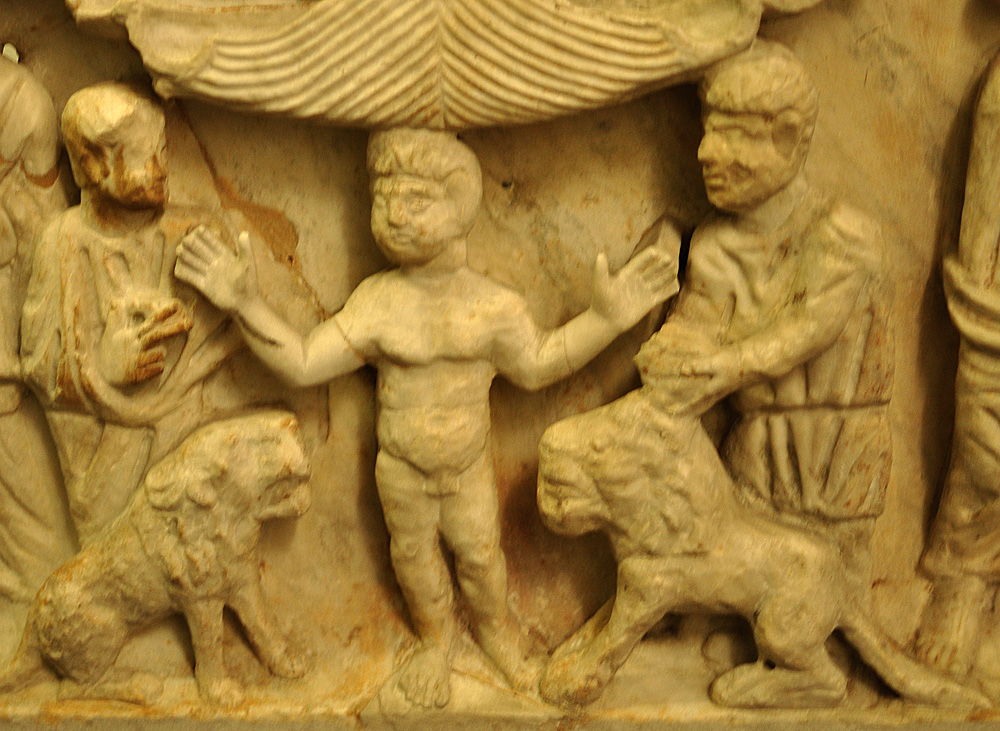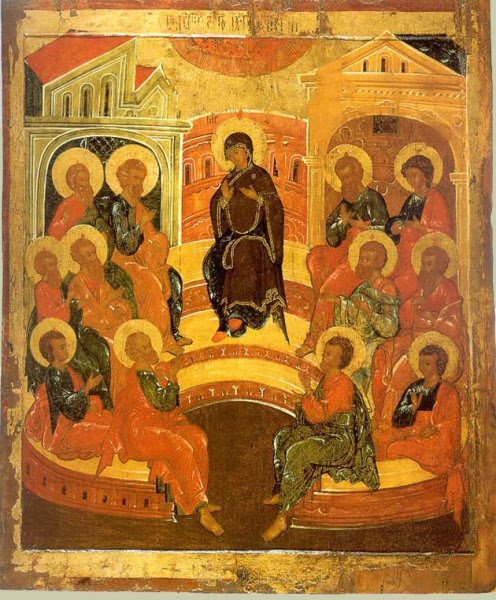
Some icons of Pentecost show Mary the Mother of God in the centre, occupying the “Teacher’s Seat.” Mary was present at Pentecost; she is the ultimate exemplar of a Christian. With Jesus Christ ascended into Heaven, the Holy Spirit acts within people, and through the saints, Christ is manifest in the world. Mary is therefore shown in the “teacher’s seat” as the best example we have, and the person on earth who most resembled Jesus Christ (both physically, as His mother, and spiritually as His disciple).
By the 9th century the Church came to recognize Mary as the Stella Maris, the Star of the Sea, an image reminiscent of sailors who would chart their course by the stars. Mary points the way to Christ.
The presence of the Apostle Paul in the icon, even though at that time he had not yet converted on the road to Damascus, hints that this icon is more than a purely historical picture. Sometimes, the evangelists Luke and Mark are also shown, despite also not having been present in the upper chamber at Pentecost. The gathering, then, is a representation of the Church. The Apostles are shown as equals, with no individual among them taking the central seat of authority. They are seated in a semi-circle, representing a unity and harmony similar to that found in Icons of the Holy Trinity. As in icons of the Holy Trinity, a semi-circle, rather than a full circle, is used so that we as observers are drawn into the unity.
See a Pentecost sermon that includes the role of the Mother of God here, preached at St. Matthew’s, Sheffield (a Church of England parish).

